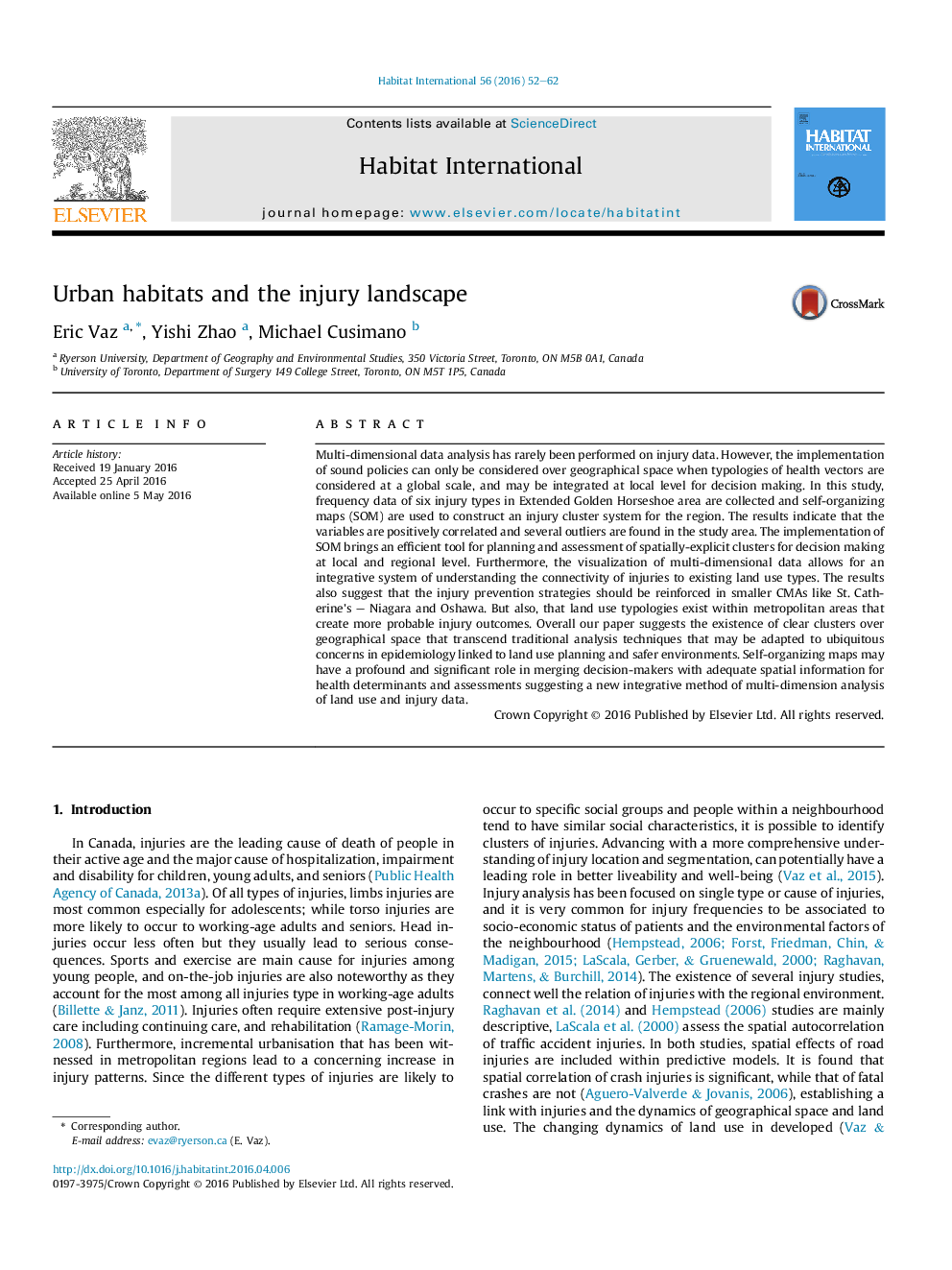| کد مقاله | کد نشریه | سال انتشار | مقاله انگلیسی | نسخه تمام متن |
|---|---|---|---|---|
| 1047696 | 1484488 | 2016 | 11 صفحه PDF | دانلود رایگان |
Multi-dimensional data analysis has rarely been performed on injury data. However, the implementation of sound policies can only be considered over geographical space when typologies of health vectors are considered at a global scale, and may be integrated at local level for decision making. In this study, frequency data of six injury types in Extended Golden Horseshoe area are collected and self-organizing maps (SOM) are used to construct an injury cluster system for the region. The results indicate that the variables are positively correlated and several outliers are found in the study area. The implementation of SOM brings an efficient tool for planning and assessment of spatially-explicit clusters for decision making at local and regional level. Furthermore, the visualization of multi-dimensional data allows for an integrative system of understanding the connectivity of injuries to existing land use types. The results also suggest that the injury prevention strategies should be reinforced in smaller CMAs like St. Catherine's – Niagara and Oshawa. But also, that land use typologies exist within metropolitan areas that create more probable injury outcomes. Overall our paper suggests the existence of clear clusters over geographical space that transcend traditional analysis techniques that may be adapted to ubiquitous concerns in epidemiology linked to land use planning and safer environments. Self-organizing maps may have a profound and significant role in merging decision-makers with adequate spatial information for health determinants and assessments suggesting a new integrative method of multi-dimension analysis of land use and injury data.
Journal: Habitat International - Volume 56, August 2016, Pages 52–62
